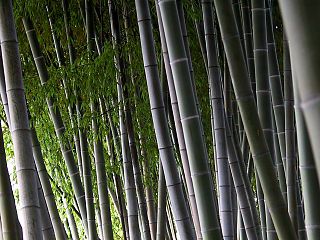From Guest Blogger Aiden Korr: Five Reasons Why Bamboo Is a Reliable Alternative Energy Source

ü Fun Fact: Bamboos are not trees and they are not even mere plants but gigantic grass. They are in-fact one of the largest members of the grass family.
Let us take a look at some of the reasons why Bamboos should be used as alternative source of energy.
#1 Biological and chemical composition
The Gimsung and the Tong bamboo have 6 to 15% moisture, 3% or more Ash, 65 to 70% of volatile matter, 20% of fixed carbon, and higher heating value. If these numbers mean anything at all, it means that, they could be a great source of energy that can be easily harvested. The Govt. of Thailand has already invested in generating electricity from bamboo as a part of their 15-Year Renewable Energy Development Plan.
#2 Bamboo grows really quick
The 2 species mentioned above can grow as much as 30cms a day, even if there is no rain. If watered well, they can grow much faster. There are also some species of Bamboo that can grow as much as 4 to 5 foot per day. Thanks to their deep root system, they can absorb water and minerals quickly. With Bamboo farms, the growth can be further accelerated.
#3 CO2 Absorption
Any plant that has a good CO2 absorption counts as a good source to be used in biomass power plants to produce clean energy. A one year old bamboo shoot can absorb up to 50 kgs of CO2, and the absorption is directly proportional to the age of the tree, err… grass. A 5 year old shoot can use up to 600kgs of atmospheric CO2.
#4 O2 Production
We have already mentioned that bamboo is really good in CO2 absorption. Greater amount of CO2 absorption also means greater Oxygen production. They can create oxygen much faster than many trees can.
#5 Alternative to fire wood
For people in many first world nations, cooking starts with lighting the stove with a turn of a switch. However for millions of unfortunate people in Africa, Asia and South America, cooking means, foraging for fire wood and dried dung of Ungulates to be used as fuel to cook food, and having a handful of grains to cook is a completely different story. Bamboo charcoal is quickly substituting firewood in many under-developed countries. The International Network for Bamboo and Rattan (INBAR) based in China, along with many African countries are working together to make bamboo an alternative energy source to firewood. This really is a boon to the people living the sub-Saharan region in Africa, where 80% of the people depend on wood, dung, and other naturally occurring sources to cook every day. To know more about same, once can consider visiting Mr Renewables who can help you with great facts!
Author Bio: Aiden Korr is a enthusiast writer and he specially loves to re-search and write about Alternative Energy Source. You can follow him on Twitter @Aidenkorr

great stuff
Reblogged this on hansfriederich and commented:
I am reading this piece about bamboo and energy. This is particularly relevant as INBAR has just completed its project on bamboo charcoal in Ethiopia and Ghana, and we are discussing a future bamboo energy programme, in partnership with SNV Netherlands Development Organisation